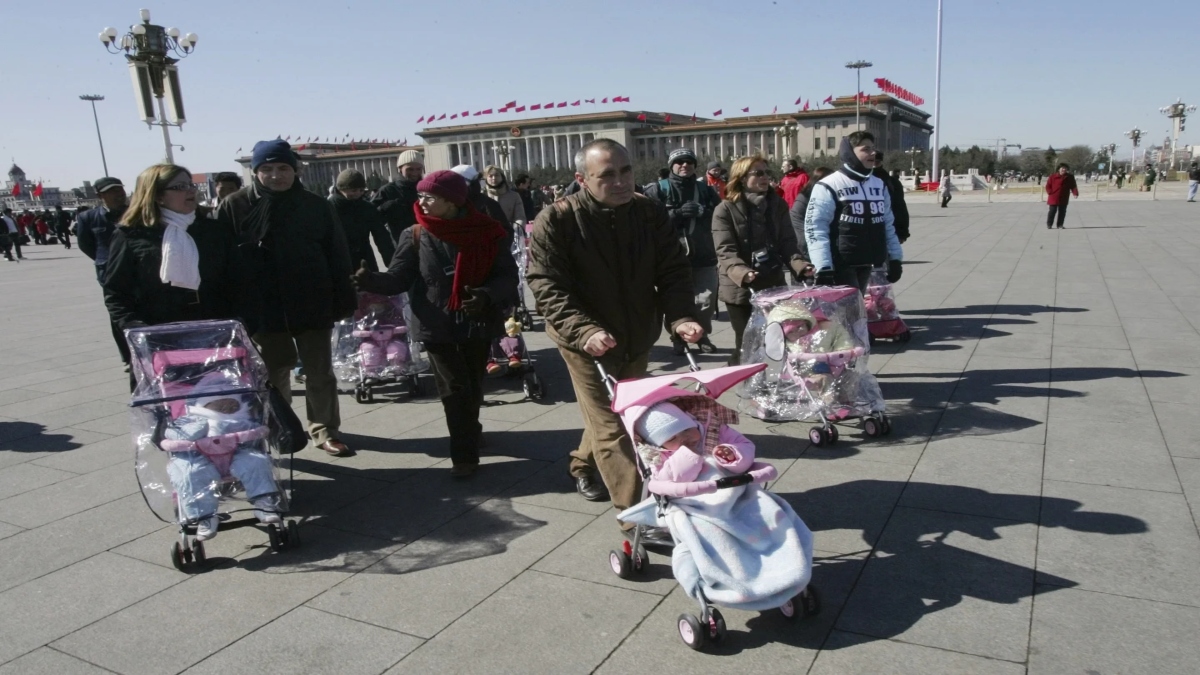China announced on Thursday that it is ending its international adoption programme, an initiative that saw tens of thousands of Chinese-born children join families in the US and other countries since the 1990s. The confirmation came from Mao Ning, a spokesperson for the Chinese Foreign Ministry at a daily press briefing.
During the presser, Mao said that China would no longer allow intercountry adoption of children who are Chinese citizens, with the only exception for blood relatives to adopt a child or a stepchild, the Wall Street Journal reported. The Chinese official did not give any further explanation on the matter and noted that the decision was “in line with the spirit of relevant international conventions.”
Following the news, the United States sought clarification on how the decision would affect hundreds of American families who have pending adoption applications. During a phone call with a US diplomat, Beijing made it clear that it “will not continue to process cases at any stage” other than in cases of exceptions as mentioned earlier. The US State Department maintained that the US embassy in Beijing is still seeking clarification in writing from China’s Ministry of Civil Affairs
“We understand there are hundreds of families still pending completion of their adoption, and we sympathise with their situation,” the State Department said in a statement.
Why it matters for US
Over the years, US families have adopted over 80,000 children from China, most of any foreign nation. International adoption from China had been on a decline for years and one of the key reasons was that the process was largely on hold during the pandemic.
In recent years, many nations have tightened restrictions regarding international adoptions amid concerns over the adoption of children who had been stolen from their parents. Beijing’s decision also reflected China’s shifting stance in recent decades from overpopulation to sharply slowing birthrates.
Impact Shorts
More ShortsA US consulate issued 16 visas for adoptions from China from October 2022 through to September 2023, the first in more than two years, the State Department report said. However, it still isn’t clear if more visas have been issued since then.
A decades-old programme
The decade of 1990 saw the launch of the one-child policy in China to address the issue of overpopulation. Under this policy, Beijing also tightened rules to stop arrangements where parents placed children born outside the policy with relatives or other families. This led to an increase in the flow of children in state orphanages which eventually opened doors for international adoptions.
“Government coercion sits at the centre of China’s international adoption program, wrote Kay Johnson, a professor of Asian studies at Hampshire College, in her 2016 book “China’s Hidden Children.” Interestingly Johnson’s daughter was one of the first adoptees from China.
Given the rise in numbers, China formally approved overseas adoption in 1992 and it soon became a leading country of origin for adoptions. According to the data released by Newcastle University, between 2004 and 2022 over 89,000 children from China were taken in by families in some two dozen nations.
The peak of such adoption in the US was in 2005 when more than 7,900 Chinese children were adopted by American families. However, the very next year, Chinese media documented the trial of a trafficking ring that had been selling babies to six orphanages in Hunan province. The court overseeing the case, eventually found that foreigners had made donations of up to $3,000 to adopt a child from the orphanages, Xinhua reported at that time.
“The suspects said that they were doing good work to save the abducted children from death. However, we found that they paid more to buy children when there was demand,” Lei Dongsheng, the then-local police chief, told Xinhua. Following the revelation, the Chinese administration tightened international adoption rules and punished local officials.
It is pertinent to note that China is not the only country to halt international adoption. In May this year, the Netherlands announced that it would no longer allow citizens to adopt from abroad following a two-year freeze. In 2024, Denmark’s only adoption agency also said that it would end foreign adoptions. Similar initiatives are also recommended by the regulatory bodies in Norway. The Norwegian authorities recommended a pause amid allegations of wrongdoing were investigated including allegations that children were taken from families that didn’t want to give them up.
With inputs from agencies.
)